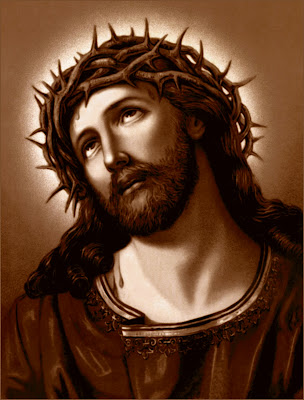This is the church in whose graveyard Teresa lies buried, and it was in Neston that her mother Mary Higginson and two of her sisters Louisa and Frances were to eventually settle. They stayed in the schoolhouse where Louisa Higginson was the headmistress of the local Catholic school, while Frances was a music teacher. Teresa was to stay with them often in the school holidays particularly around Christmas and Easter, causing them much worry as she was so often in a state of ecstasy! It was here that she had some of her first revelations concerning the Sacred Head.
The church was built in the 1840's by A.W. Pugin and for much of its life remained a small country parish. Teresa was to complain after her banishment here from St. Alexander's, Bootle that there was not always daily mass, the church was locked much of the time and that there was no exposition of the Blessed Sacrament. In more recent years the church has been expanded by putting an extension on the north side, from which can be seen the sanctuary:
There is a story about Teresa in when she was staying in Neston in November 1876: the parish priest Canon Daly went away, and there was a shortage of wicks to keep the sanctuary lamp burning. Fearing it would go out, she ordered some more when an old priest called and handed her a box of wicks, and then intimated that he wished to say mass. She prepared the altar for him and lit the candles, surprised to find that he knew where everything was. She attended his mass and received communion. When this was finished she went to get him breakfast, and then found he had disappeared without a trace, leaving all the vestments neatly folded. On enquiring and giving the description of who he was, he turned out to be a deceased former parish priest who lay in the graveyard.
Teresa was to be buried here with her mother Mary Higginson (died September 28th 1884) and her nephew Frederick Halifax (died August 10th 1877). She died in Chudleigh, Devon on February 15th 1905 and her body was brought here by her sister Louisa in a private railway carriage. For some time the grave was not marked with her inscription until 1930, and then in the late 1980's a horizontal slab was placed on it with prayers to the Sacred Head. Nearby is the grave of Bishop Joseph Gray of Shrewsbury who retired in 1995, who was buried here according to his wish.










